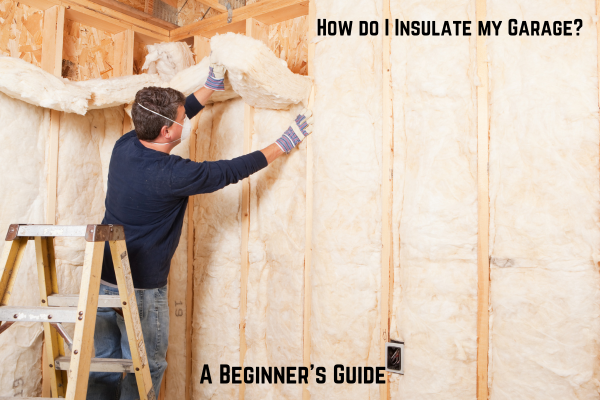
How do I Insulate my Garage? | A Beginner's Guide
Are you dreaming of converting your cold garage into a space you can use throughout the year? Whether you have plans for a home gym, a workshop, or even a guest room, insulation is the essential element to ensure comfort and energy efficiency.
However, for many homeowners, the query 'How can I insulate my garage?' can seem overwhelming.
Benefits of Garage Door Insulation
Before delving into the details, let's explore the benefits of insulating your garage:
- Enhanced Comfort: Bid farewell to extreme temperatures! Insulation regulates the garage's climate, providing year-round comfort, regardless of external weather conditions
- Energy Efficiency: By preventing heat loss during winter and heat gain in summer, insulation significantly reduces your energy expenses, leading to long-term savings.
- Noise Control: Insulation acts as a sound barrier, effectively dampening noise originating from the garage and preventing it from disturbing your living space.
- Increased Property Value: An insulated garage contributes to enhancing the overall value of your property, making it more appealing to potential buyers.
Types of Garage Door Insulation
| Insulation Type | Pros | Cons |
| Rigid Foam | High R-value, easy to install, good noise reduction | Not breathable, can attract pests |
| Fiberglass | Affordable, DIY-friendly, readily available | Skin and lung irritants are fire hazards if not installed properly |
| Radiant Barriers | Reflects heat, reduces cooling costs | Not effective in cold climates, doesn't insulate against heat loss |
| Cellulose | Fire-resistant, eco-friendly | Expensive, can lose effectiveness over time |
| Spray Foam | High R-value, excellent air sealing, pest-resistant | Very expensive, professional installation required, can shrink |
How to Insulate Your Garage Door
To initiate the insulation process for your garage door, start by identifying its construction material, which could be steel, wood frame-and-panel, or flat. Customize your insulation approach to align with the specific door type, ensuring optimal results.
Determine Door Construction Material: Steel, Wood Frame-and-Panel, or Flat
Identify the material your garage door is made of, whether it's constructed with steel, designed with a wood frame-and-panel structure, or is a flat door. This information will serve as a guide for determining the appropriate insulation method.
Insulating Steel Garage Doors: Flexible Insulation or Pre-cut Foam Board
When dealing with steel garage doors, pay particular attention to the frames surrounding the panels. You have two insulation options:
- Utilize flexible insulation and insert it into the frames, making sure it fits snugly.
- Alternatively, consider using pre-cut foam board insulation, and insert it into the frames to ensure sufficient coverage.
Insulating Wood Frame-and-Panel Garage Doors: Stiff Insulation in Recesses
When working with wood frame-and-panel garage doors, cut rigid insulation to match the dimensions of the recesses between the door frames. Secure the insulation in place to guarantee full coverage and achieve optimal insulation.
Insulating Flat Garage Doors: Utilize Foam Board
Flat garage doors are most effectively insulated using foam board. Simply attach the insulation directly to the door surface using tape or glue. This method creates a seamless and highly effective barrier against temperature fluctuations.
Important Consideration: Added Weight
It's important to bearin mind that adding insulation to your garage door will increase its weight. This can potentially affect the door's balance and tension, necessitating adjustments. Assess the door's functionality, and if required, consider replacing the springs to maintain the correct tension and ensure proper door closure.
Additional Tips for Insulating Your Garage Door
- Ensure precise measurements and cuts of insulation materials to achieve a proper fit.
- Utilize suitable adhesives, tapes, or fasteners to secure the insulation in place.
- Take into account the insulation's R-value to assess its effectiveness in assess thermal resistance.
- Regularly inspect the garage door after insulation to promptly address any issues that may arise.
Conclusion
Following these steps, you can certainly insulate your garage door on your own; however, it’s advisable to consider professional assistance for the best results. By doing so, you can enjoy the benefits of a well-insulated space, which include lower energy bills and a cozy retreat during extreme weather conditions.
Contact Door Doctor today to get your answer to “How do I insulate my garage door?”




